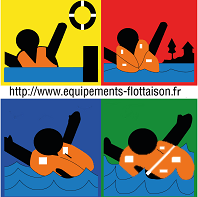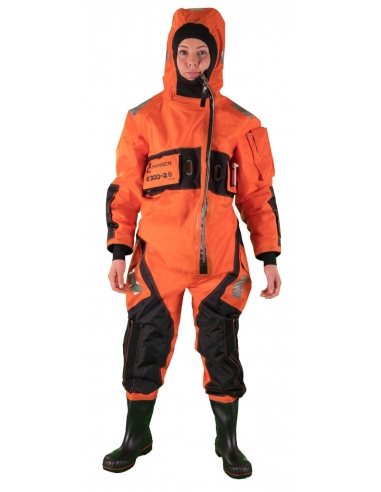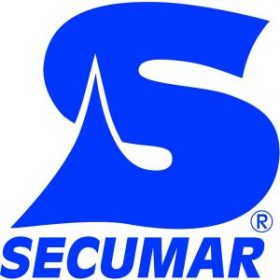Cette recherche découle de la recommandation de sécurité 2008-036 de l’AAIB: «Il est recommandé que l’Agence européenne de la sécurité aérienne (AESA) étudie des méthodes permettant d’accroître la visibilité des combinaisons d’immersion portées par l’équipage de conduite, afin d’améliorer l’emplacement des survivants un hélicoptère amerrissant ».
L’étude a examiné la possibilité d’exploiter des matériaux rétroréfléchissants pour accroître la visibilité de l’équipage dans un scénario de sauvetage.
Il comprend un examen des capacités de l’équipement de l’avion utilisé pour la recherche et le sauvetage (SAR) dans un environnement maritime et des concepts sous-jacents relatifs à la visibilité.
Un essai sur le terrain haute fidélité a ensuite été mené pour évaluer la performance de la combinaison d’immersion modifiée dans une mission SAR simulée.
Des recommandations sont formulées sur la manière dont les normes de conception des combinaisons d’immersion pourraient être élaborées à l’avenir.
This report is offered in fulfilment of contract EASA.2017.C20: Crew Immersion Suits Conspicuity (CIMSCY) Study. The context of this work derives from the AAIB (Air Accidents
Investigation Branch) report into the Morecambe Bay accident in 2006 [1]. The AAIB report details the crash of a helicopter transporting employees to an oil and gas platform.
One recommendation resulting from the report (Paragraph 1.15.3, page 37) concerns improving the conspicuity of aircrew when in the water following a crash:
“The operating crew were wearing dark blue immersion suits … The immersion suit and un-inflated life jacket are designed to have low reflectivity in order to reduce internal reflections
on the instrument panels and windscreens of the cockpit, during helicopter operations.
However, the rescue crews commented that the yellow immersion suits worn by the passengers were noticeably more conspicuous, when using the helicopter’s searchlight in the darkness,
than the blue immersion suits worn by the pilots.”
This observation was developed into Safety Recommendation 2008-036 in the final accident report:
2008-036 It is recommended that the European Aviation Safety Agency (EASA) investigate methods to increase the conspicuity of immersion suits worn by the flight crew, in
order to improve the location of incapacitated survivors of a helicopter ditching. (p65).
In this report, we address this recommendation. We examine in detail the potential to exploit retroreflective materials to increase the conspicuity of aircrew in a rescue scenario. We include
as an annex to this report a detailed literature review that includes an overview of offshore oil and gas helicopter operations, and detailed discussion about the capabilities of the aircraft
equipment used and the underlying concepts relating to conspicuity (Annex 1, p71).
The main body of this final report details the development of interventions and their testing to improve the conspicuity of casualties by day and by night. The performance of different
retroreflective materials were tested using a range of illumination sources and cameras on board an AgustaWestland AW189 aircraft used by Bristow Helicopters Ltd for UK Search and
Rescue (SAR). A selection of these materials were then applied in a specific configuration to a current regulation immersion suit and their reflective properties were evaluated in the cockpit by
experienced SAR pilots as subject matter experts (SMEs).
A high fidelity field trial was then conducted to evaluate the performance of the modified immersion suit in a simulated SAR mission in the UK. Finally, based on the work conducted, we report twenty-four detailed findings
and make six recommendations on how the ETSO standard for immersion suit design may be evolved in the future.






